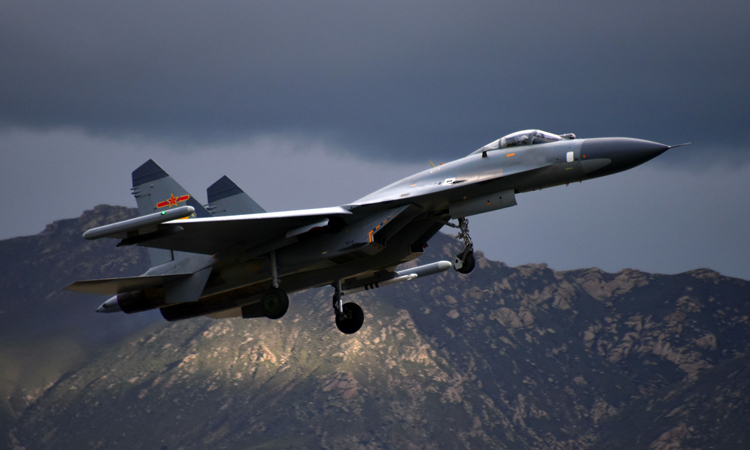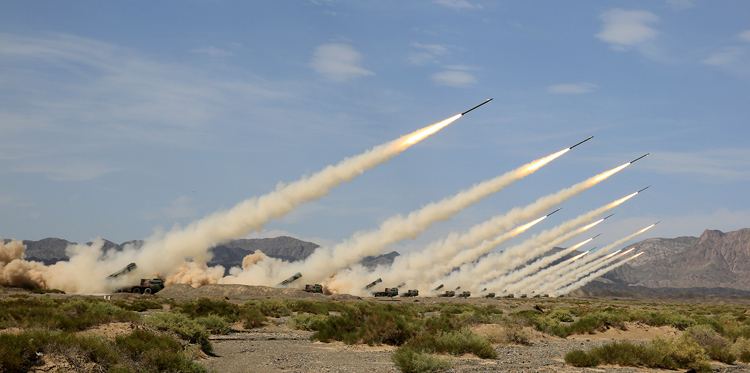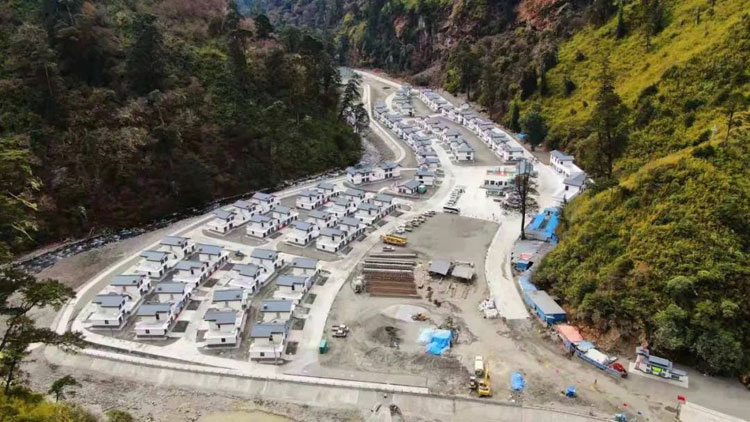INDIAN ARMED FORCES CHIEFS ON OUR RELENTLESS AND FOCUSED PUBLISHING EFFORTS

The insightful articles, inspiring narrations and analytical perspectives presented by the Editorial Team, establish an alluring connect with the reader. My compliments and best wishes to SP Guide Publications.

"Over the past 60 years, the growth of SP Guide Publications has mirrored the rising stature of Indian Navy. Its well-researched and informative magazines on Defence and Aerospace sector have served to shape an educated opinion of our military personnel, policy makers and the public alike. I wish SP's Publication team continued success, fair winds and following seas in all future endeavour!"

Since, its inception in 1964, SP Guide Publications has consistently demonstrated commitment to high-quality journalism in the aerospace and defence sectors, earning a well-deserved reputation as Asia's largest media house in this domain. I wish SP Guide Publications continued success in its pursuit of excellence.
- MoD initiates comprehensive review of Defence Acquisition Procedure 2020, pushes for defence reforms
- G7: The Swansong
- Kalinga Connect: South Asia to Polynesia
- Must Credit DRDO for Operation Sindoor, now what is next for defence R&D?
- The layered Air Defence systems that worked superbly, the key element of Operation Sindoor
- Operation Sindoor | Day 2 DGMOs Briefing
- Operation Sindoor: Resolute yet Restrained
Chinese Muscle Flexing
Chinese fighter jets, including J-11, have been flying close to the Line of Actual Control (LAC) over past few weeks, in direct violation of the 10-km Confidence Building Measures (CBM) mutually agreed with India
 |
The Author is Former Director General of Information Systems and A Special Forces Veteran, Indian Army |

On July 25, 2022, Chinese President Xi Jinping congratulated President Droupadi Murmu, saying he stands ready to work with her to enhance political mutual trust, properly handle differences and push bilateral ties forward on the right track. Xi also said a healthy and stable China-India relationship is in line with the fundamental interests of the two countries. But Chinese actions are getting more aggressive – against India, South Asia as also the World.
Chinese fighter jets, including J-11, have been flying close to the Line of Actual Control (LAC) over past few weeks, in direct violation of the 10-km Confidence Building Measures (CBM) mutually agreed with India. Hours after 16th round of India-China military talks in Ladakh on July 17, China’s state media network CCTV showed a 33-second video of the People’s Liberation Army (PLA) undertaking a military exercise with attack helicopters over Pangong Tso.
As already reported in these columns, China gave priority to Ladakh for establishing 5G network along the LAC, and China’s second bridge over Pangong Tso is to facilitate movement of tanks and mechanised columns, improving PLA’s offensive capability. China has also been conducting military exercises in Lake Mansarover area.
The latest Chinese move in Nepal is reported from the Ruila border post of Chumanubri Village, Gorkha District. China has erected 200-meter fencing and a gate on a stretch which was in Nepal until a fortnight ago.
Simultaneous to the July 17 military talks in Ladakh, CCTV showed PLA firing the Multiple Launch Rocket System (MLRS), PCL-191 mounted on a truck that can hit targets in high altitude at 500 km. CCTV described the PCH-191 long range rocket launcher deterrent to India. PCL-191 is able to carry 8 x 379mm rockets, each with a range of 350 km, or 2 x 750mm Fire Dragon 480 tactical ballistic missiles, each capable of striking targets at 500 km. PCL-191 gives the PLA capability to target our critical bases and installations in greater depth. Presently, China has deployed the Type PHL-03 MLRS in Ladakh (range of 70-130 km) and PCL-181 vehicle-mounted howitzers (range 40-72 km).
On July 22, 2022, two kgs uranium was seized from smugglers in different hotels of Biratnagar (Nepal), According to police, the smugglers intended to cross into Bihar somewhere in the Jogbani district. Nepalese and India security agencies are investigating the issue. This quantum of radioactive material could be used for a major terrorist attack. Where did the smugglers acquire the uranium, were the smugglers being used as ‘carriers’ by China or Pakistan?

Media reports of July 24, 2022, citing intelligence agencies say that a Chinese construction company had set up office in Pakistan-occupied Kashmir (PoK) and was controlling work being executed in areas adjoining Muzaffarabad and Athmuqam. China has been constructing bunkers for Pakistani army earlier also but the current project is right at the Line of Control (LoC), Earlier, China helped Pakistan upgrade a forward airbase opposite Bikaner in Rajasthan where also more than 350 stone bunkers and border outposts were refurbished.
It was also covered in these columns earlier that in 2020, China encroached on at least 28 hectares of Nepali land in the districts of Humla, Rasuwa, Sankhuwasabha and Sindhupalchok. China constructed PLA posts on these lands but the Nepalese regime of K.P. Sharma Oli (Beijing’s stooge) denied any loss of territory. China had also occupied entire Rui Village, falling under the Gorkha district by simply shifting the border pillars.
Recent satellite imagery by the US-based Maxar Technologies show a fully developed Chinese village East of Doklam “on the Bhutanese side” some nine km from the Doklam tri-junction
The latest Chinese move in Nepal is reported from the Ruila border post of Chumanubri Village, Gorkha District. China has erected 200-meter fencing and a gate on a stretch which was in Nepal until a fortnight ago. Because of this fencing, some 190 households in Nepal’s Gorkha District have become part of China’s illegally occupied territory in Nepal. PLA soldiers are not permitting locals to move from one village to another, as was the case earlier.
In November 2018, media reported China had built a village ‘Pangda’ just inside southwestern border of Bhutan. One year later, satellite imagery showed Chinese village ‘Gyalaphug’ constructed two km inside Bhutan with a new road leading to it; about nine km from the India-China 2017 standoff in Doklam Plateau. An Indian publication mentioned Shen Shiwei, a senior producer with Chinese CGTN News, posting images of the village established in what he said was the Doklam area and later indicated the precise location of the settlement. The report also revealed that other areas of Western Bhutan had also been gradually encroached by China to secure access to the border with India.

Recent satellite imagery by the US-based Maxar Technologies show a fully developed Chinese village East of Doklam “on the Bhutanese side” some nine km from the Doklam tri-junction. The village is fully established with cars parked at the doorstep of almost every house. Alongside the village is a neatly marked all-weather carriageway. The road could give China access to a strategic ridge in Doklam. The Chinese aim is to eventually secure the Jhampari Ridge to outflank the Indian defences in Sikkim bordering Bhutan. Moreover, Jhampari Ridge is the last high ground that will bring the Siliguri Corridor within PLA’s long range weaponry.
China’s research ship ‘Yuan Wang-5’, which actually is for spying purposes, is set to enter Sri Lanka’s Hambantota Port (leased to China for 99 years) on August 11, 2022 for replenishment and will stay on for a week or so. The Yuan Wang-5 is to reportedly conduct satellite control and research tracking in the north western part of the Indian Ocean region through August and September. The timing of the spy ship harbouring in Hambantota with the unrest in Sri Lanka is notable, which may have political motives also with Sri Lanka requesting assistance from China in terms of trade, investments and tourism.

China-Pakistan anti-India nexus is getting stronger with both inviting foreign countries to invest in the China-Pakistan Economic Corridor (CPEC), which also runs through POK - Indian Territory. Of serious concern also are Chinese links with terrorist organisations in conjunction with Pakistan. The Worldwide Threat Assessment by the US Intelligence Community dated February 9, 2016, said that the Islamic State of Khorasan (ISKP) in South Asia is an amalgamation of primarily disaffected and rebranded former Afghan Taliban and Tehrik-e-Taliban Pakistan (TTP) members.
But above threat assessment did not mention, by default or design, that a brigade strength ISKP was established by Pakistan’s ISI in Peshawar, which also included Pakistan-based terrorists and ISI cadres, which was later pushed into Nangarhar province of Afghanistan. In fact, the Afghans used to call it “ISI Brigade”, not ‘ISKP Brigade’.The ISKP has recently published a 115-page pamphlet giving the rationale for the religious and political legitimacy to attackIndia. It also criticises any relationship between Afghanistan andIndia. Some ISKP members may already be in India in the garb of Afghan refugees.
China’s research ship ‘Yuan Wang-5’, which actually is for spying purposes, is set to enter Sri Lanka’s Hambantota Port (leased to China for 99 years) on August 11, 2022
Finally, China is a rogue country that can advance additional territorial claims any time. In 2005, China overnight expanded its claim from the Tawang Plateau in the east to entire Arunachal Pradesh. Beijing is mainly focused on Taiwan but can enlarge conflict in Ladakh or open a new front against India fabricating reasons. China recently released plans to construct a second highway (G695 national expressway) through Aksai Chin along the border with India – to be completed by 2035. According to South China Morning Post this expressway may also go near the Depsang Plains, Galwan Valley and Hot Springs on the LAC. This should indicate to us what Beijing’s plans are for Ladakh.





